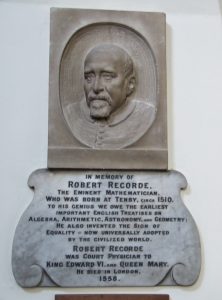4 Background of the Equals Sign

Before the equals sign was invented, mathematicians did not have a symbol or sign to use for the idea of equality. They would have to write the math equations in sentences.
The equals sign (=) was invented by a man from Wales in England in 1557 because he did not want to keep writing the words for equals.
The equals sign has two horizontal parallel lines (=). Robert Recorde said that “no two things can be more equal.”
It took about 150 years for the equals sign to be widely used. By the 1700s, it appears to be used widely in mathematics.
Video
Watch this short reel How The Equals Sign Was Invented (EXPLAINED) by zachfilms

